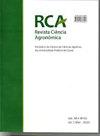Spray deposition from a remotely piloted aircraft on the corn crop
IF 1
4区 农林科学
Q3 AGRICULTURE, MULTIDISCIPLINARY
引用次数: 2
Abstract
- The use of remotely piloted aircraft (RPA) has grown in agricultural spraying around the world, but there is a lack of research data to assist users in making more assertive decisions due to its recent nature. This study aimed to evaluate spray deposition in corn using an RPA DJI AGRAS-MG-1 at two application heights compared to the application using a knapsack sprayer. Sprayings were carried out in the corn crop at the phenological stage V5–V6. The experiment consisted of three treatments and eight replications, applied with an RPA at heights of 1.5 and 3.0 m and a CO 2 -pressurized knapsack sprayer. The application rate was 10 L ha − 1 for RPA and 115 L ha − 1 for the knapsack sprayer. Flat fan spray tips were used for all treatments. Tracer deposition in the corn canopy and spray loss to the soil were evaluated using spectrophotometric detection, while coverage, density, and droplet spectrum were evaluated on water-sensitive paper. Total and effective deposition swath were also evaluated for RPA. Although droplet density provided by RPA varied between 26 and 39 droplets cm − 2 , the coverage was lower than 1.3%. Application using RPA at the height of 1.5 m provided tracer deposition on corn leaves similar to that carried out with the knapsack sprayer. The increase in application height to 3.0 m promoted a reduction in the deposition. Ground spraying promoted higher spray loss to the soil. The effective deposition swath consisted of 5.7 and 7.6 m for application heights of 1.5 and 3.0 m, respectively.一架遥控飞机在玉米作物上喷洒喷雾
本文章由计算机程序翻译,如有差异,请以英文原文为准。
求助全文
约1分钟内获得全文
求助全文
来源期刊

Revista Ciencia Agronomica
Agricultural and Biological Sciences-Horticulture
CiteScore
2.00
自引率
0.00%
发文量
41
审稿时长
4-8 weeks
期刊介绍:
To publish technical-scientific articles and study cases (original projects) that are not submitted to other journals, involving new researches and technologies in fields related to Agrarian Sciences. Articles concerning routine analysis, preliminary studies, technical notes and those which merely report laboratorial analysis employing traditional methodology will not be accepted for publication. The Journal of Agronomical Science also has the mission to promote the exchange of experience in the referred fields.
 求助内容:
求助内容: 应助结果提醒方式:
应助结果提醒方式:


